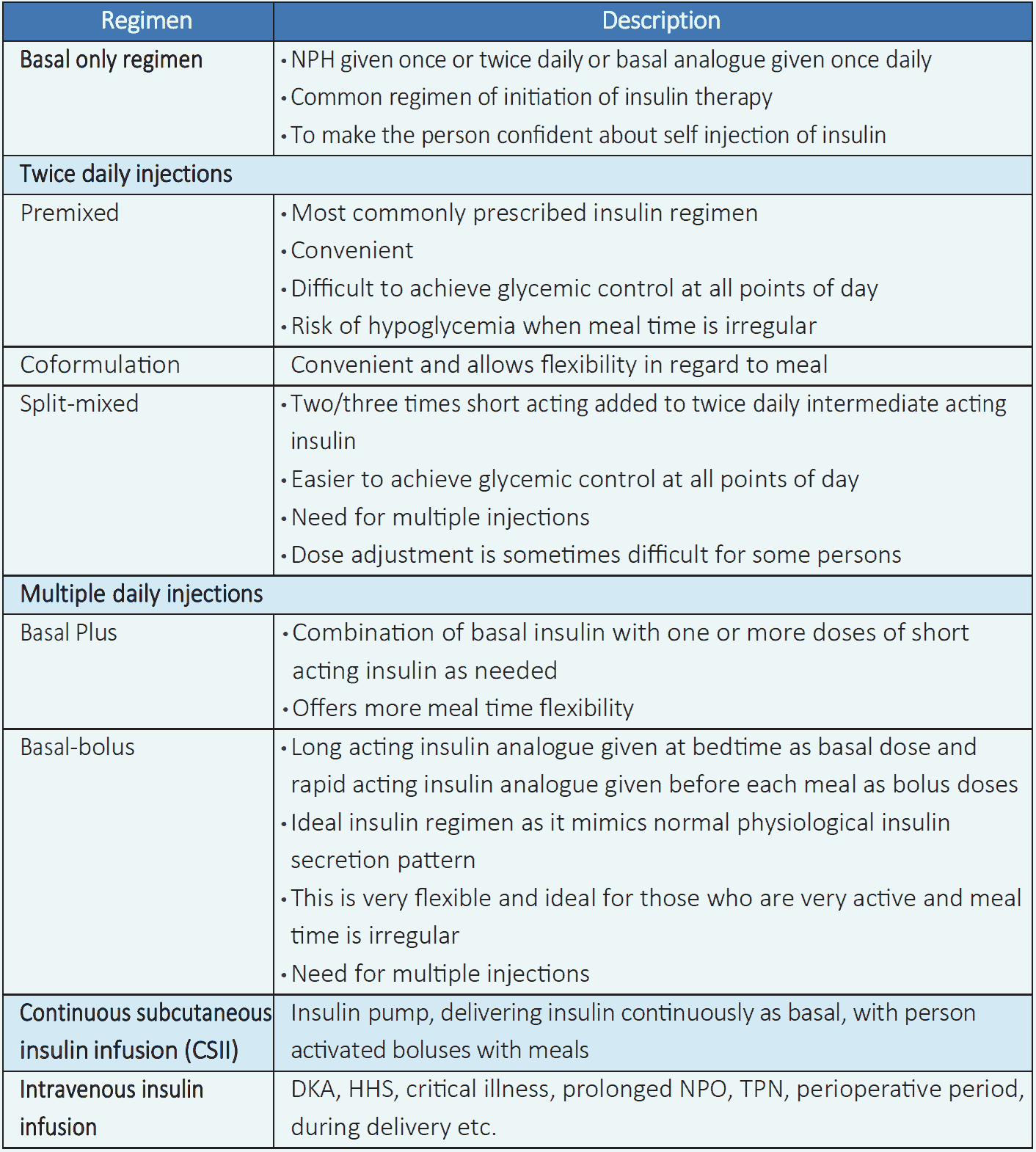Indications of insulin:
- Type 1 DM
- Severe acute complication/illness e.g. MI, acute infection
- Uncompensated chronic complication or illness
- Pregnancy and lactation
- At least 3-5 months prior to planned conception
- Major surgery
- OAD failure
- Poor glycemic status
- HbA1c >10%
- FBS >14 mmol/L, RPG >18 mmol/L (with or without symptom)
- HbA1c >7% in spite of 50% of maximum dose of SU and maximum tolerable dose of sensitizer
- Symptomatic hyperglycemia



